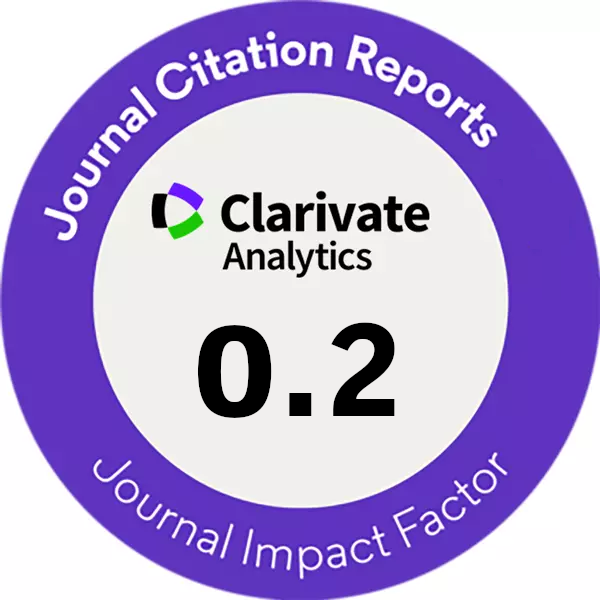STUDY ON THE BLASTING SEISMIC DAMAGE CONTROL TECHNOLOGY FOR SMALL SPACING SOFT ROCK TUNNEL
DOI:
https://doi.org/10.14311/CEJ.2017.02.0015Keywords:
Small spacing tunnel, Red layer soft surrounding rock, Blasting damage, optimization, Grouting reinforcement.Abstract
With a lot construction of transportation infrastructure in Chinese mountainous area, because of its unique advantages such as less land occupation, beautiful appearance and convenient route planning, small spacing tunnels are widely used. The shallow buried tunnel with small spacing, the blasting excavation will lead to tunnel surrounding rock especially in the middle rock wall damage and reduce the self-bearing capacity of surrounding rock. Through detecting and analyzing by the geological radar of the excavated red layer soft rock tunnel surrounding rock found that the middle rock wall loose circle thickness of the tunnel reaches to 1.8 m, the vault and sidewall loose circle thickness is about 1.2 m. Through selection of rational strengthening measures and blasting design scheme to improve drilling parameters and methods, as far as possible to protect the integrity and self-bearing capacity of the surrounding rock, the deformation and vibration of the tunnel would be controlled in reasonable limits and ensure the safety of tunnel construction.
Downloads
References
Zhu Zhengguo,Sun Minglu, Zhu Yongquan. Field Monitoring on Blasting Vibration and Dynamic Response of Ultra-small Spacing Tunnel, J. Rock and Soil Mechanics,12(2012):3747-3754.
Shi Hongchao,Zou Xinkuan,Zhang Jichun.Experimental Study on Vibration Reduction Blasting in Small-distance Tunnel in Stratiform Surrounding Rock,J. Blasting,4(2015):1-5.
Shao Zhushan,Li Pingping,Wang Xinyu. Active Control of Blast-induced Damage of Tunnels with Small Spacing,J. Chinese Journal of Applied Mechanics,2(2014):230-234.
Rohit Tiwari,Tanusree Chakraborty,Vasant Matsagar.Dynamic Analysis of Tunnel in Weathered Rock Subjected to Internal Blast Loading,J.Rock Mechanics and Rock Engineering,11(2016):4441–4458
LI Yunpeng, Ai Chuanzhi , Han Changling. Study on dynamics effect caused by blasting construction by numerical simulation for tunnels with small spacing,J. Explosion and Shock Waves, 01(2007):75-81.
Alireza Talebinejad,Hamid Chakeri,Mahdi Moosavi.Investigation of surface and subsurface displacements due to multiple tunnels excavation in urban area,J. Arabian Journal of Geosciences,9(2014): 3913–3923
Li Xiudi,Jiang Shuping,Liu Yuanxue.Numerical Simulation of Blasting Dynamic Response of Small Spacing Tunnel Expansion,J. China Earthquake engineering Journal,4(2014):784-789.
Song Kiill, Oh Taemin.Precutting of Tunnel Perimeter for Reducing Blasting-induced Vibration and Damaged Zone-Numerical Analysis,J. KSCE Journal of Civil Engineering, 4(2014):1165-1175.
Yang Chengzhong,Yu Zongjian.Analysis of the dynamic influence of the input blasting load on the tunnel surrounding rock.Materials Research Innovations,19(2015):923-930
Shin Jongho, Moon Hoongi,Chae Sungeun. Effect of Blast-induced Vibration on Existing Tunnels in Soft Rocks,J. Tunnelling & Underground Space Technology, 1(2011):51-61
Ling Xu,Howard Schreyer,Deborah Sulsky.Blast-induced Rock Fracture Near a Tunnel.J. International Journal for Numerical & Analytical Methods in Geomechanics,1(2014):23–50
Yang Chengzhong, Huang Zongqiang,Wang Shufang.Analysis of Surrounding Rock and Supporting Interaction Mechanism of soft rock tunnel[J]. Information Technology Journal,23(2013):7604-7609
Qi Han,Gao Bo,Wang Shuaishuai.Mechanical Behaviors of a Shallow-bias Tunnel with a Small Clear Distance in Different Geological Conditions,J. Modern Tunnelling Technology, 4(2014):108-112
Sun Shaorui, Yue Ling,Wu Jimin,Wei Jihong.Case Study on Influence of Step Blast-excavation on Support Systems of Existing Service Tunnel with Small Interval,J. Advances in Mechanical Engineering, 3(2013):257457-257457
Chakraborty Tanusree, Larcher Martin.Performance of Tunnel Lining Materials under Internal Blast Loading,J. International Journal of Protective Structures, 1(2014):83-96
Chakraborty A. K. Raina A. K.. Development of Rational Models for Tunnel Blast Prediction Based on a Parametric Study,J. Geotechnical & Geological Engineering, 4(2004):477–496.
Zhao Huabing,Long Yuan,Li Xinghua. Experimental and Numerical Investigation of the Effect of Blast-induced Vibration from Adjacent Tunnel on Existing Tunnel,J.KSCE Journal of Civil Engineering,1(2016):431–439.
Lei Mingfeng, Lin Dayong, Yang Weichao.Model Test to Investigate Failure Mechanism and Loading Characteristics of Shallow-bias Tunnels with Small Clear Distance,J. Journal of Central South University,12(2016):3312-3321
Jiang Nan, Zhou Chuanbo.Blasting Vibration Safety Criterion for a Tunnel Liner Structure,J. Tunnelling & Underground Space Technology, 6(2012,):52-57
Wang Qian,Qv Liqing,Guo Hong-yu. Grouting Reinforcement Technique of Qingdao Jiaozhou Bay Subsea Tunnel,J.Chinese Journal of Rock Mechanics and Engineering, 04(2011):790-802.
Liu Yun,Zhou Yubing. Study on Partition and Reinforcement Method of Middle Rock Pillar in Soft Rock Tunnel with Small Clear Distance,J. Chinese Journal of Underground Space and Engineering, 02(2013):373-379.
Downloads
Published
Issue
Section
License
Copyright (c) 2023 Author

This work is licensed under a Creative Commons Attribution-NonCommercial 4.0 International License.
Authors who publish with this journal agree to the following terms:
- Authors retain copyright and grant the journal right of first publication with the work simultaneously licensed under a Creative Commons Attribution License that allows others to share the work with an acknowledgement of the work's authorship and initial publication in this journal.
- Authors are able to enter into separate, additional contractual arrangements for the non-exclusive distribution of the journal's published version of the work (e.g., post it to an institutional repository or publish it in a book), with an acknowledgement of its initial publication in this journal.
- Authors are permitted and encouraged to post their work online (e.g., in institutional repositories or on their website) prior to and during the submission process, as it can lead to productive exchanges, as well as earlier and greater citation of published work (See The Effect of Open Access).










